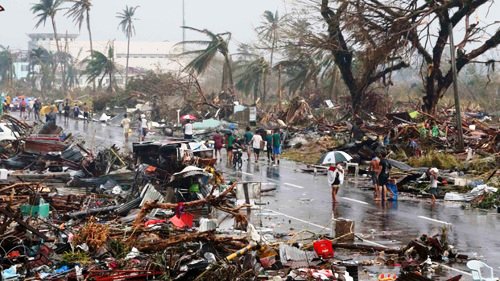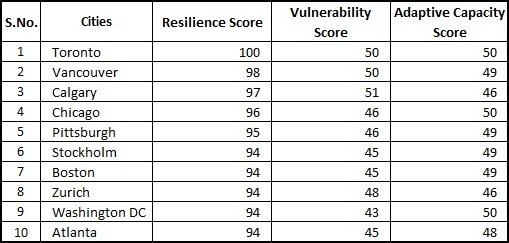 A report released on April 8 by Grosvenor’s research team suggests that Canadian cities could be the best bet for long-term real estate investment, with Toronto, Vancouver and Calgary taking the first, second and third spots respectively. The research ranks 50 of the world’s top cities according to their resilience: a product of their environmental and social vulnerability and adaptive capacity, which covers community, infrastructure, resources, environmental and climatic factors.
A report released on April 8 by Grosvenor’s research team suggests that Canadian cities could be the best bet for long-term real estate investment, with Toronto, Vancouver and Calgary taking the first, second and third spots respectively. The research ranks 50 of the world’s top cities according to their resilience: a product of their environmental and social vulnerability and adaptive capacity, which covers community, infrastructure, resources, environmental and climatic factors.
Commenting on the research, Richard Barkham, Group Research Director, said, “This research provides us with a powerful tool to use when looking at the risks and opportunities of long-term real estate investment in cities around the world. It helps Grosvenor, our clients and partners, to look beyond classic, but limited definitions of real estate investment risk, which have little meaning over the long-term, and instead broadens our understanding of a city and its risk profile.”
“We are not suggesting that you shouldn’t invest in those cities that place lower down the rankings, but the research highlights the risks those cities face and enables more informed decision making. In some cases, there could be greater opportunities, especially where a city has demonstrated its commitment to improving its adaptive capacity.”
Mark Preston, CEO, Grosvenor Group, said, “Grosvenor has been investing in and developing real estate for over 300 years and a holistic understanding of the cities that we are active in is integral to the success of our business. It is certainly reassuring to see that we have long been active in some of the world’s most resilient cities and this research gives us insight into where we may want to have a presence in the future.”
Key findings from the research are:
- The most resilient cities are in Canada, with Toronto, Vancouver and Calgary taking the top three spots respectively.
- American cities are relatively vulnerable, but their capacity to adapt makes them fairly resilient. New York has the highest adaptive capacity of the 50 cities in this study, most recently demonstrated with its ability to cope when Hurricane Sandy hit.
- The lowest ranked cities are also those with the highest population forecast figures.
- The middle group of cities – ranked 11 to 30 – is fairly close to the top 10 in their scores so must be considered resilient. Most European cities fall into this group. London is ranked 18th.
- The weakest 20 cities are in emerging markets and are considerably weaker than the top 30. Eight of these are in the so called BRIC countries. So far, blistering economic growth has not fed through into the quality and long term resilience of these cities.
Richard Barkham adds, “If you are investing with a short-term perspective, a portfolio of the resilient cities won’t necessarily be less volatile; in fact you would have a more volatile portfolio if you only invested in the top five cities as they are very similar and moving in the same cycle. However, investors with a long-term perspective, such as pension funds or sovereign wealth funds can deploy capital in these cities and be confident that if they take a knock they will bounce back in a relatively short term. These cities are safe havens in a rapidly changing global environment.”
The ability of cities to thrive as centres of human habitation, production and cultural development, despite the challenges posed by climate change, population growth and globalisation, is determined by their resilience.
Grosvenor’s ‘Living Cities’ approach recognises that the future success of our business is tied to the sustainable growth of the cities in which we invest, and understanding a city’s resilience, its ability to avoid or bounce back from an adverse event, is an integral part of this.
World’s Top 10 Resilient Cities
Click here for a copy of the report and case studies.
Source: Grosvenor.
About Grosvenor
Grosvenor Britain & Ireland is a British property corporation with offices in 18 cities operated on behalf of its owners, The Duke of Westminster and his family, and aims to create value through skills in place-making and design, repositioning locations in ways that change customer perceptions and deliver results for their stakeholders. The core portfolio comprises 300 acres of Mayfair and Belgravia in London, which first came into the Grosvenor family in 1677. Ownership and active management of its London estate remains at the heart of Grosvenor Britain & Ireland’s strategy. Investment assets comprise the largest part of its portfolio. Grosvenor Britain & Ireland also undertakes development across London, and in selected city centres around the UK. As at 31 December 2012, Grosvenor Britain & Ireland had assets under management of £4.8bn. For more information, visit www.grosvenor.com.
















